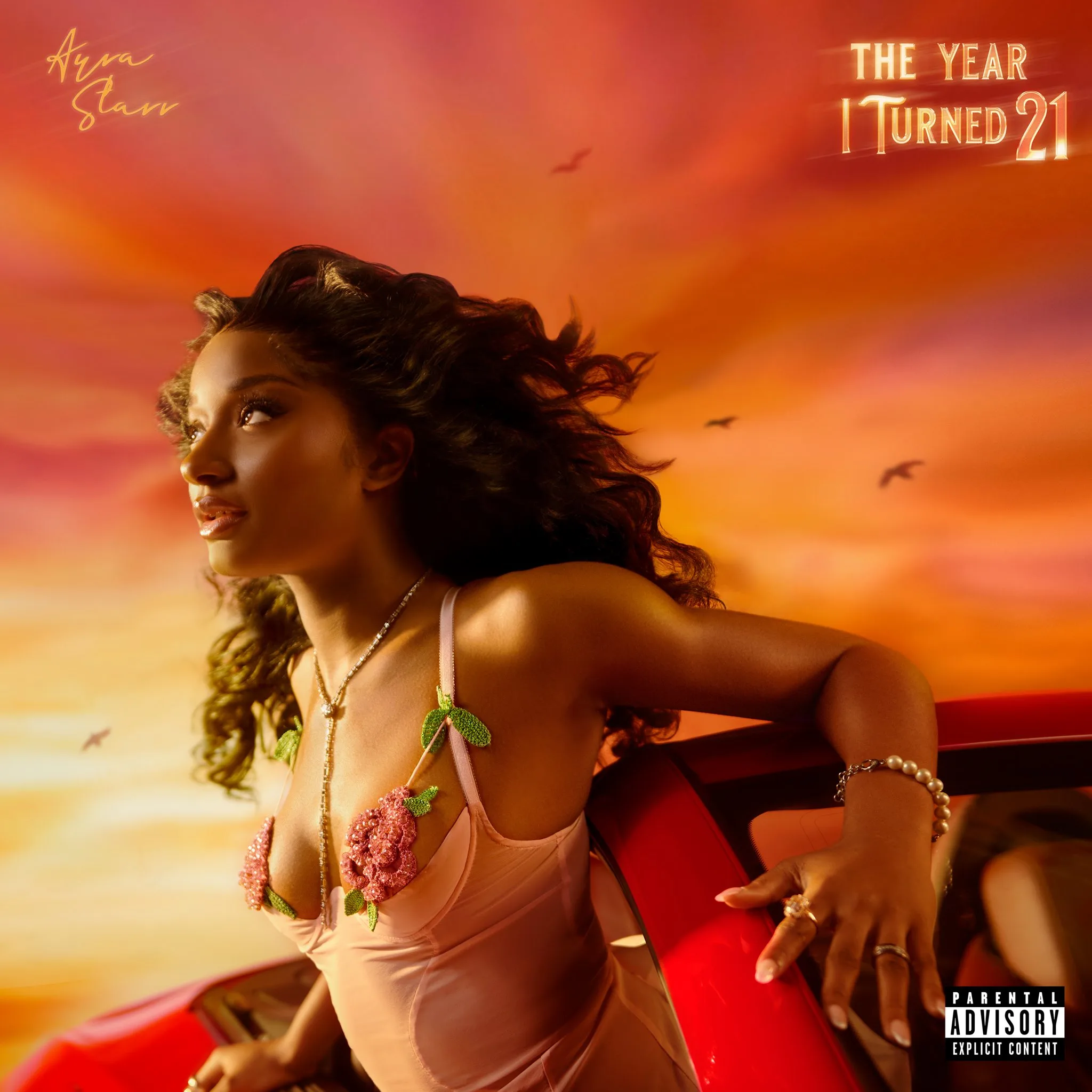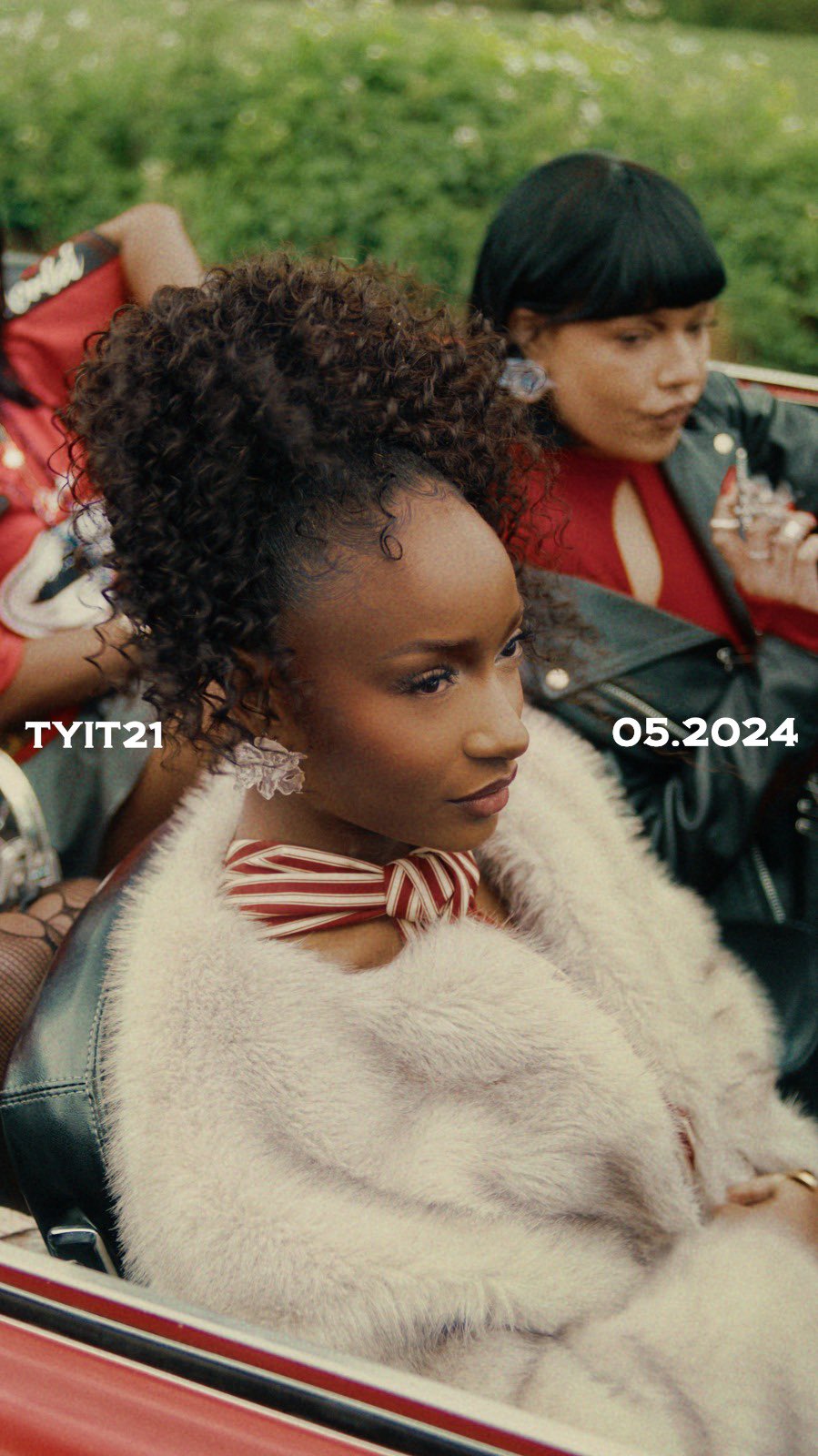The Year I Turned 21 isn’t just an album with records, it is a project that captures in words and beats the experiences of a young adult superstar.
By Hope Ibiale
Making an impressive sophomore project after an incredible debut may seem like a difficult undertaking because of the pressure to measure up or exceed listeners’ and critics’ expectations. However, Oyinkansola Sarah Aderibigbe, popularly known as Ayra Starr, proves herself to be an anomaly with her sophomore album, The Year I Turned 21. The artiste has curated a project that boasts top-notch production quality, relatable writing, intentional collaborations, and clear vocal dexterity. “Every good painter paints what he is”, as put forward by American painter, Jackson Pollock, is what best describes this sophomore. Ayra’s latest is drawn from her experiences as well as who and what she represents. On this 15-track project, Ayra invites Nigerian artistes Asake, Seyi Vibez, and Milar, American, Coco Jones, Giveon, and Spanish singer, Anitta, who bring their diverse artistry to make a wholesome project.
The album begins with “Birds Sing of Money”, a befitting opener that kicks off with a Yoruba chanter eulogising the artiste. The transition from drawn-out violins to Hip-Hop beats resonates well because of the smooth transition of both elements. Over the Hip-Hop beat, Ayra sings, “I run up shots, I run dem myself. I run up blocks, I run them myself”, immediately reinstating her position as a talented artiste. Here, Ayra embodies a braggadocio attitude and the bouncy beats make for a formidable propeller for her state of mind. Like her previous projects, Ayra Starr and 19 & Dangerous, the artiste is bold about her declarations. Whether it’s cutting off an unfaithful lover such as in “Away” or being unapologetic about living her life without inhibitions as in “Cast (Gen Z Anthem)”, Ayra continues to make audacious affirmations about her life and make bold entrances on her music projects.
Once the next song, “Goodbye (Warm Up)” comes on, my mind subconsciously brings up the same excitement I felt when I heard the record on the music show, “Aprtment Sessions”. Here, Ayra recruits Asake for a record that captures the reality of a broken relationship, with both artistes narrating why their relationship has gone awry. While Ayra’s delivery leans into her pop influences, Asake retains his fuji-esque mode as he switches between exploring his feelings in Yoruba and a Fuji-style delivery. On one hand, Ayra sings about a lover who craves her touch, and at the same time, Asake expresses his desire to be free from a problematic love affair. Listening to the song’s different narratives repeatedly shows that both verses can work as standalone as a result of their distinct artistry, but together it is the perfect comeback song for angry ex-lovers. The production is pristine as it suitably accommodates both deliveries without any overlap.

“Commas” comes up next, expanding on the confident delivery evident from the beginning. After making a bold entrance on the first song, and shutting off her lover on the second, the artiste acknowledges God’s presence in her success. While “Commas” captures her success story, it is also an inspiring bop that might resonate with listeners because of the words of affirmations and how it can effortlessly fit into different playlists. The women-led anthem, “Woman Commando”, grabs my attention due to the unique delivery from the featured artistes. Here, Anitta, Coco Jones, and Ayra create a catchy anthem that seamlessly bends its elements to accommodate their artistry. While Anitta swoons in with a delivery in Spanish, Jones has a confident take on the record, positioning her as one of the stars to look out for for more Afrobeats collaborations. I expect this record to be one of the favourites for ladies because of its empowering lyrics. It is also an ode to the resilience of the artistes on the record.
“Control” is an R&B song that sees Ayra express her heartfelt affection for her love interest. In the record, Ayra is love-drunk as she describes her emotions over basslines and guitar strings. From the beginning of The Year I Turned 21, listeners see different parts of Ayra’s life, and this time, they get a glimpse into her love life. At the start of the song, someone introduces Ayra to the stage, and while she delivers a scintillating performance, she has her eyes on her love interest. She restrains her feelings here, but things take a turn as she is hot and reckless in “Lagos Love Story”. When she sings, “Let’s make babies, I still young but I dey ready. Smoke some weed at the beach”, listeners can envision this reckless love era. The unhinged lyricism meets up to the production chop that is turned up a notch. She sings, “I don fall in love. So na this one una dey enjoy”.

The artiste continues to wear her emotions on her sleeve on “Rhythm & Blues” — a song seemingly dedicated to a love interest. This track was released a few months before, and as a standalone, it is appreciable, but placing it on the album just might have increased its value as the record precedes other love songs, perfectly fitting it into a part that captures her love life.
“21” is one record on the project that embodies Ayra’s experience as a woman in her 20s. On the soulful R&B track, the artiste reflects on her experiences up until that age. From her childhood to her first record deal, Ayra sits in her accumulated experiences, while also wondering what this year will bring. While still unsure of what the future brings, she stands up straight and chooses to live by her rules. “21” might be Ayra’s sole experience, but it also speaks to listeners within this age range. It is a message that speaks to the uncertainties of young adulthood.
Giveon and Ayra join forces on “Last Heartbreak Song” for an emotional heartbreak song. Here, both artistes bid farewell to lovers who don’t reciprocate their affections. This is an auditory pleasure as there is chemistry between the artistes, and their vocals merge to bring their emotions to the surface. However, “Last Heartbreak Song” could have been placed after “Rhythm & Blues” because of the similar themes and the former could have concluded Ayra’s love story. But it appears that the sonic similarities might be the reason why it comes here.
“Bad Vibes” picks up the braggadocio attitude from the first five tracks. Laced with a stellar verse from Seyi Vibes, “Bad Vibes” is a record that sums up Ayra’s resolve to remain unfazed despite opposition. Once again, both artistes find the perfect spots to shine on the song’s eclectic production. The slightly similar string patterns on “Goodbye (Warm Up)” are placed on the highlife record, “Orun”. Here, Ayra seeks forgiveness and asks for God’s blessing. While the record and song production don’t require much from Arya vocally or lyrically, it is an enjoyable record because of the Highlife-influenced guitar strings and the song’s theme that remind me of old Yoruba Highlife records from the likes of Ebenezer Obey and King Sunny Ade.
She leaves behind the sober persona on “Orun” for a more cheerful aura on the celebratory, “Jazzy’s Song”. Here, Ayra lets loose and creates an exciting tune. With this, the artiste celebrates her achievement and dedicates the record to Don Jazzy, someone who is a key part of her success story. To further showcase her appreciation for the music producer, she interpolates Wande Coal’s “You Bad”. The interpolation is expertly done and listeners might be transported to the beauty of “You Bad” while relishing the newly-created record. “1942” sees the artiste and her brother, Milar, continue to celebrate their achievements and also share their fears. Milar is the perfect collaborator for this as a result of the artiste’s songwriting contributions to a large part of her discography. Both artistes are vulnerable as they recount their efforts to build a global career and when they both sing, “I don’t wanna lose”, listeners may hear the sincerity of their plea. Through Ayra’s sophomore project, she puts every part of her experiences into perspective; whether good or bad, she lets herself be vulnerable, happy, and sad at the same time.
Ayra continues to be vulnerable with the last record on the album, “The Kids Are Alright”. The record, which is dedicated to her late father, begins with drawn violins and a recording from the artiste’s mother. The song transitions to the artiste and her family sending heartfelt messages to their lost loved one. The album closes off on an emotionally good note. With “The Kids Are Alright”, The Year I Turned 21 addresses significant parts of her emotions and musical journey. The project closes the curtain with a bonus track titled “Santa”. In this Reggaeton record, she teams up with Rvssian and Rauw Alejandro for a sensual record that has all the artistes unabashedly weave words around their sexual needs. While “Santa” is a good track, I wish it had come after “Lagos Love Song” or “Control” because of their similar themes and sensuality. This album should have closed off with “The Kids Are Alright”, not only because of the emotional subject matter but because it makes “Santa” feel out of place. It almost feels like the song was added by mistake or as an afterthought.

The Year I Turned 21 is an exquisite album from an intentional artiste dedicated to crafting the sonic brilliance of her experience. As an artiste, Ayra is consistently demonstrating her growth and willingness to carve a path for herself and showcase her artistry. One key feature that makes this project stand out is the infusion of her identity in the records. Whether it’s blowing her horns in “Birds Sing of Money” or singing about her love life on tracks like “Lagos Love Song” and “Rhythm & Blues”, listeners can hear different parts of the artiste littered all over the album. Her cultural identity is evident in the chosen instrumentals, song titles, and choice of language on some of the records. There is intentionality in the song titles, features, production, and interpolation, which makes the album an enjoyable sonic experience.
Largely, the album thrives on the cohesiveness that resounds throughout the album, even though the song arrangement could have been better put together. The album is divided into parts that capture themes like love, loss, heartbreak, and resilience, but some of the records with these themes don’t follow one another. For the production chops, P.Prime, Johnny Drille, Remdolla, Marvey Again, Mystro, Sparrq, AOD, P2J, Ragee, London, and Louddaaa deserve their flowers, as each record suits the singer’s vision and elevates the album’s listening experience, giving each featured artistes a sonic environment to bloom without exerting themselves.
The Year I Turned 21 isn’t just an album with records, it is a project that captures in words and beats the experiences of a young adult superstar. The relatability in the lyrics might also enhance the listening experience. For every listener, there is part of the album to connect with, especially those in their 20s. Some records would resonate with those who have or are experiencing feelings of uncertainty, fear, loss, heartbreak, and even love, while older listeners may listen to revisit old memories. After listening to the album repeatedly, it is evident that The Year I Turned 21 is a testament to Starr’s growth and dedication as an artiste.
Lyricism – 1.5
Tracklisting – 1.5
Sound Engineering – 1.8
Vocalisation – 1.6
Listening Experience – 1.6
Rating – 8/10
Hope Ibiale is a writer and journalist. She has a keen interest in music, film, and literature. You can connect with Hope on X @hopeibiale and via email: hopeibiale@afrocritik.com.





